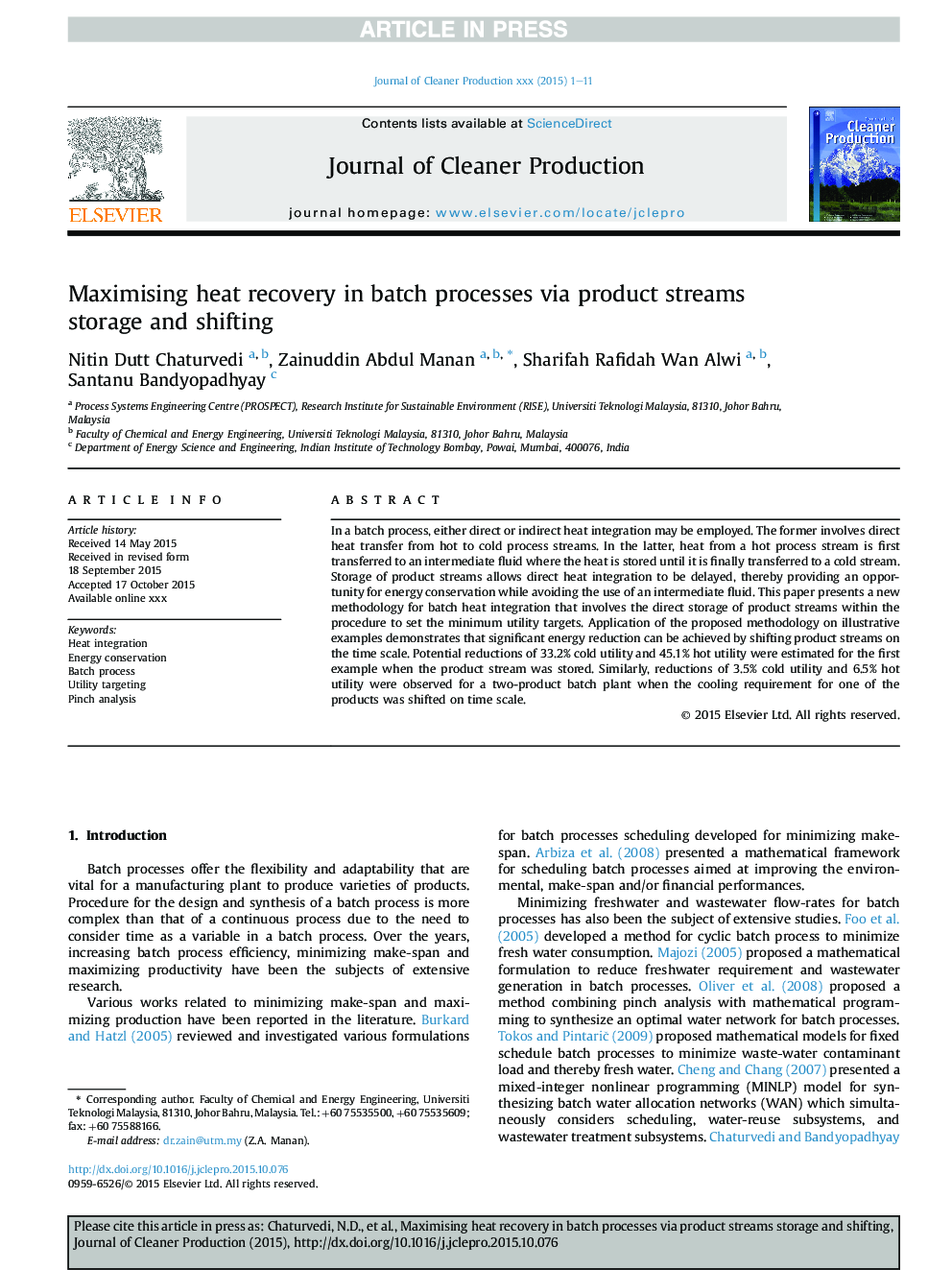| Article ID | Journal | Published Year | Pages | File Type |
|---|---|---|---|---|
| 10687868 | Journal of Cleaner Production | 2016 | 11 Pages |
Abstract
In a batch process, either direct or indirect heat integration may be employed. The former involves direct heat transfer from hot to cold process streams. In the latter, heat from a hot process stream is first transferred to an intermediate fluid where the heat is stored until it is finally transferred to a cold stream. Storage of product streams allows direct heat integration to be delayed, thereby providing an opportunity for energy conservation while avoiding the use of an intermediate fluid. This paper presents a new methodology for batch heat integration that involves the direct storage of product streams within the procedure to set the minimum utility targets. Application of the proposed methodology on illustrative examples demonstrates that significant energy reduction can be achieved by shifting product streams on the time scale. Potential reductions of 33.2% cold utility and 45.1% hot utility were estimated for the first example when the product stream was stored. Similarly, reductions of 3.5% cold utility and 6.5% hot utility were observed for a two-product batch plant when the cooling requirement for one of the products was shifted on time scale.
Related Topics
Physical Sciences and Engineering
Energy
Renewable Energy, Sustainability and the Environment
Authors
Nitin Dutt Chaturvedi, Zainuddin Abdul Manan, Sharifah Rafidah Wan Alwi, Santanu Bandyopadhyay,
